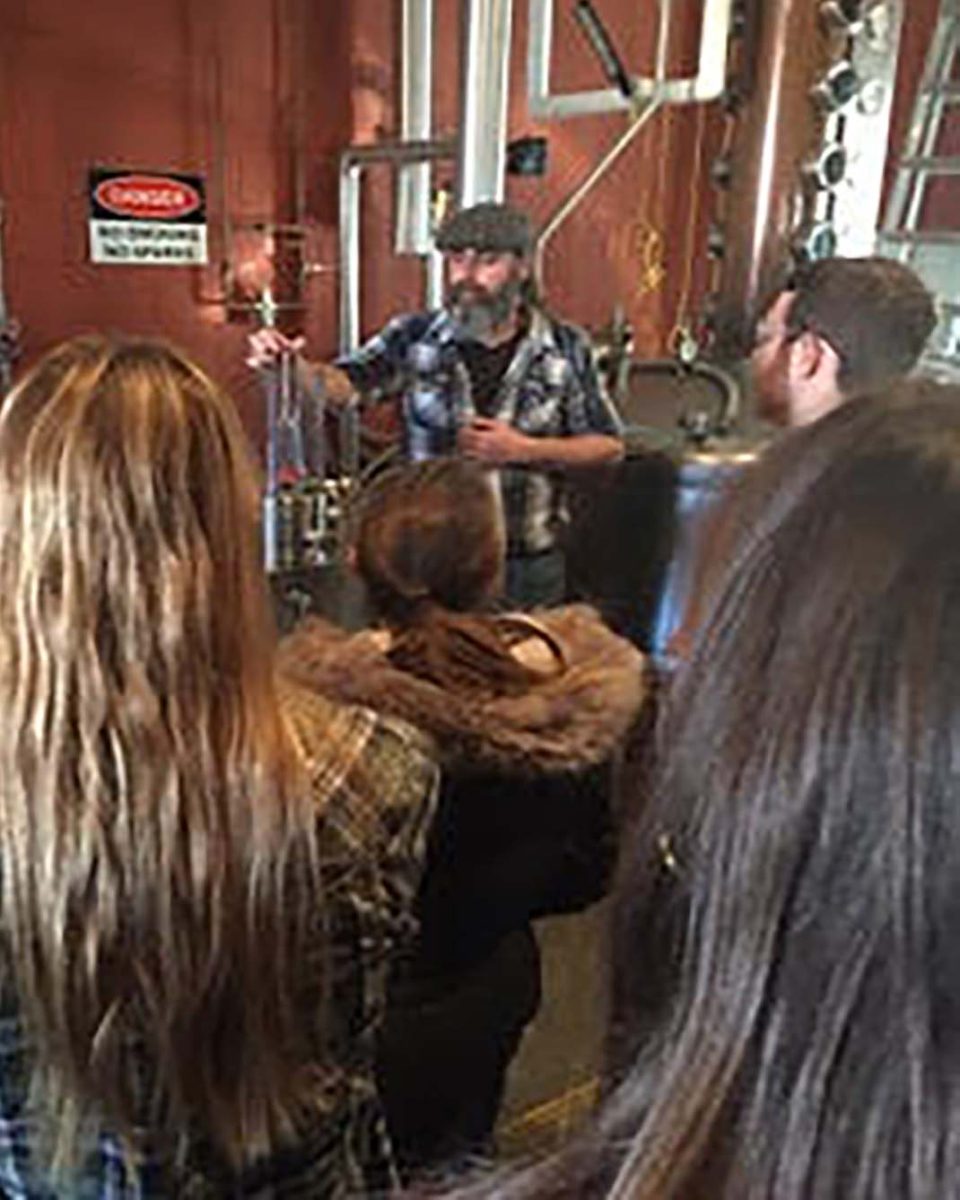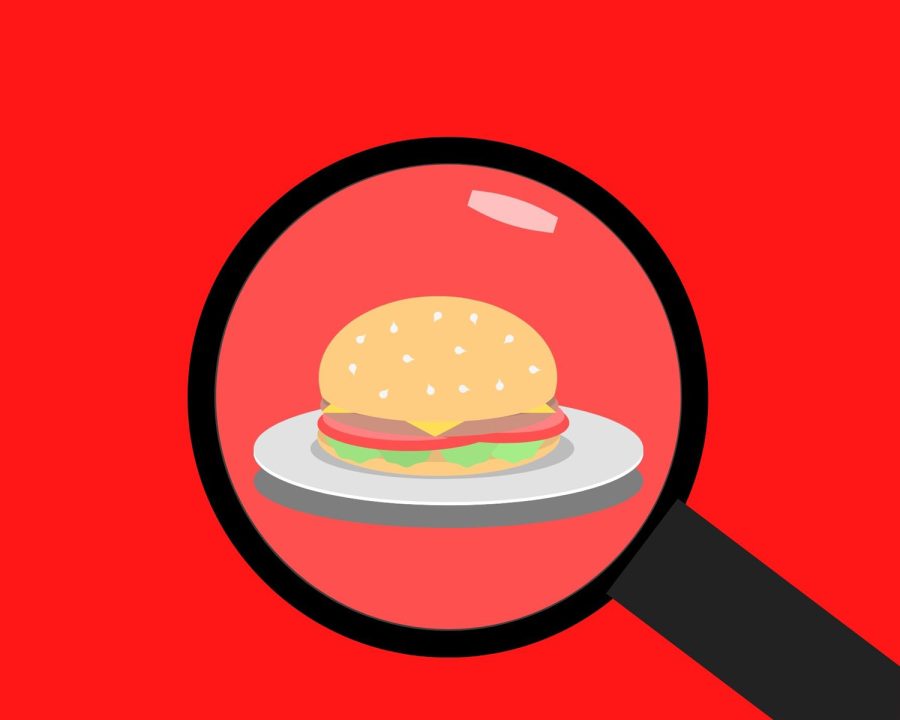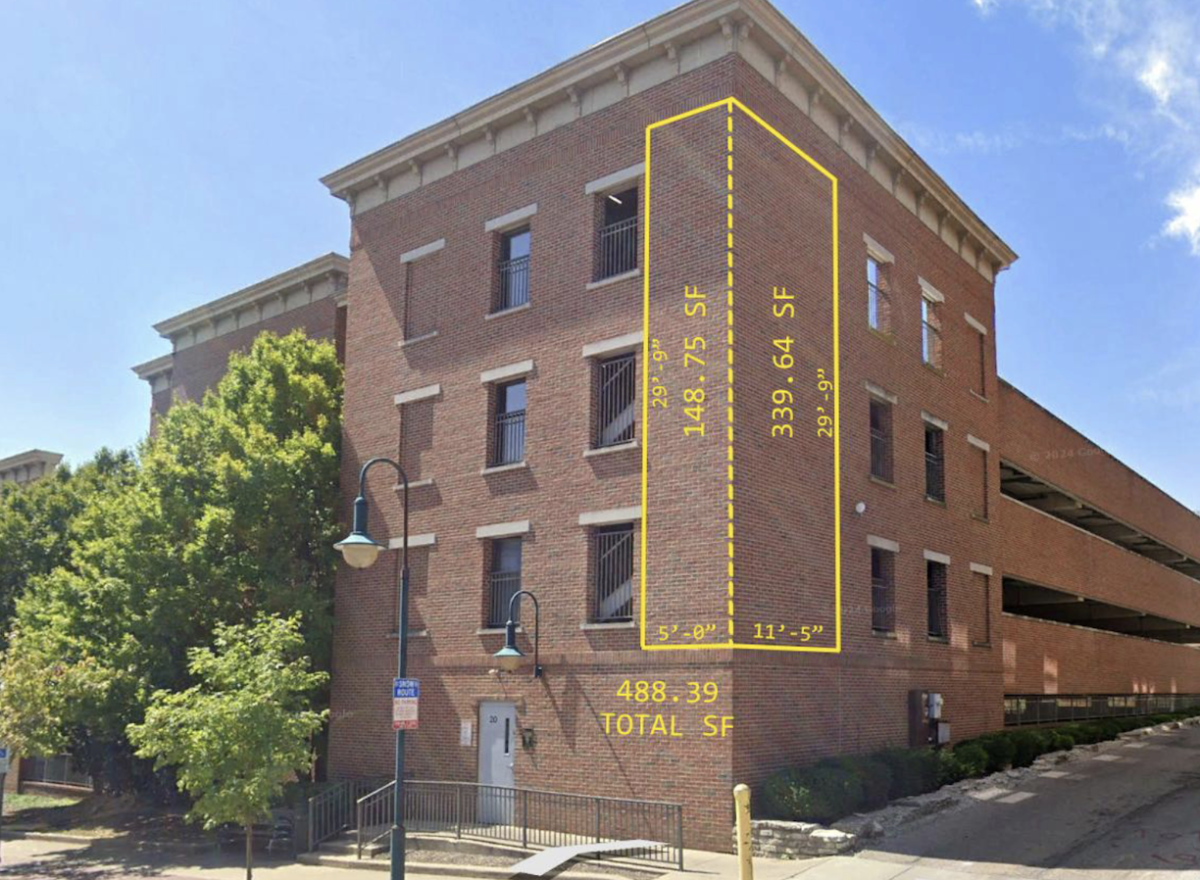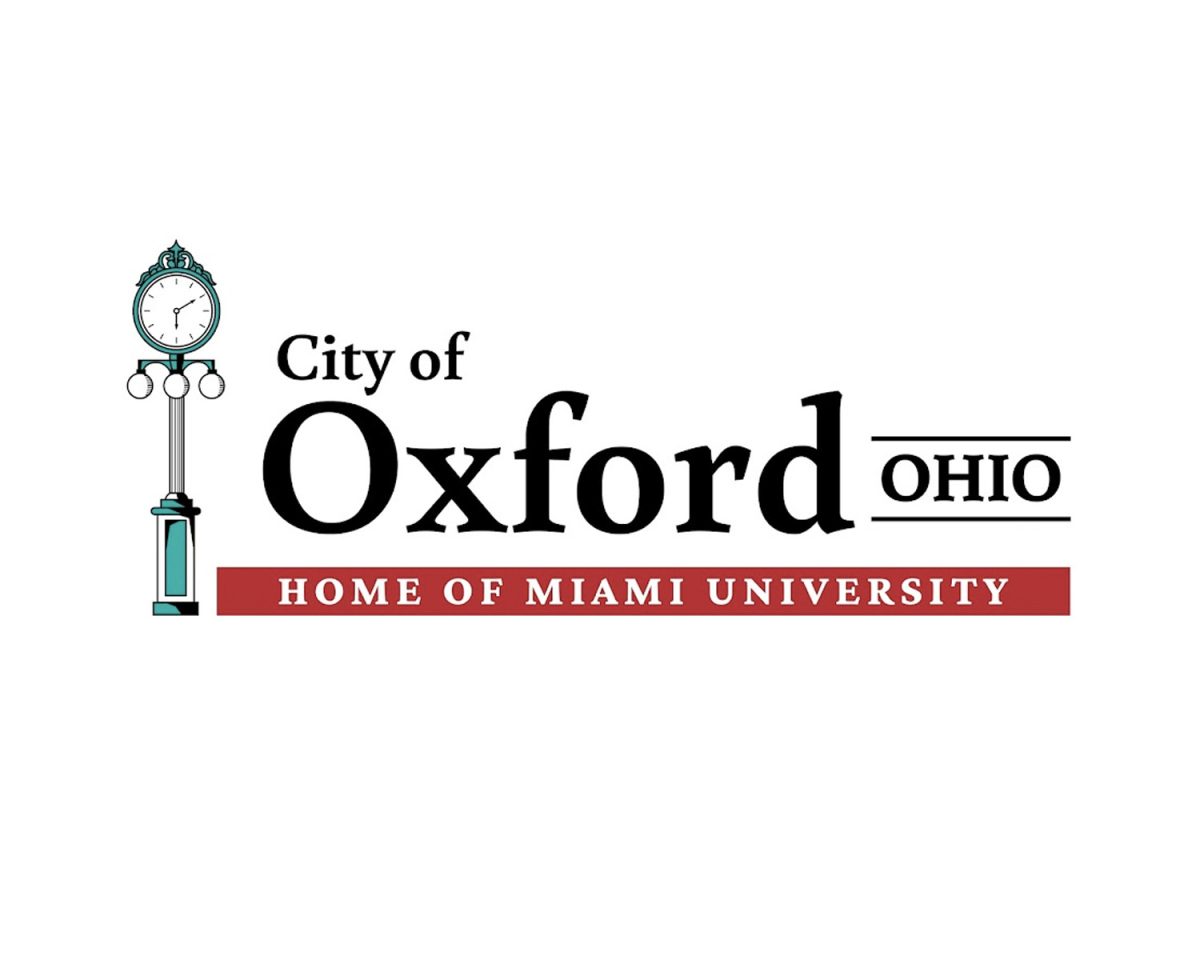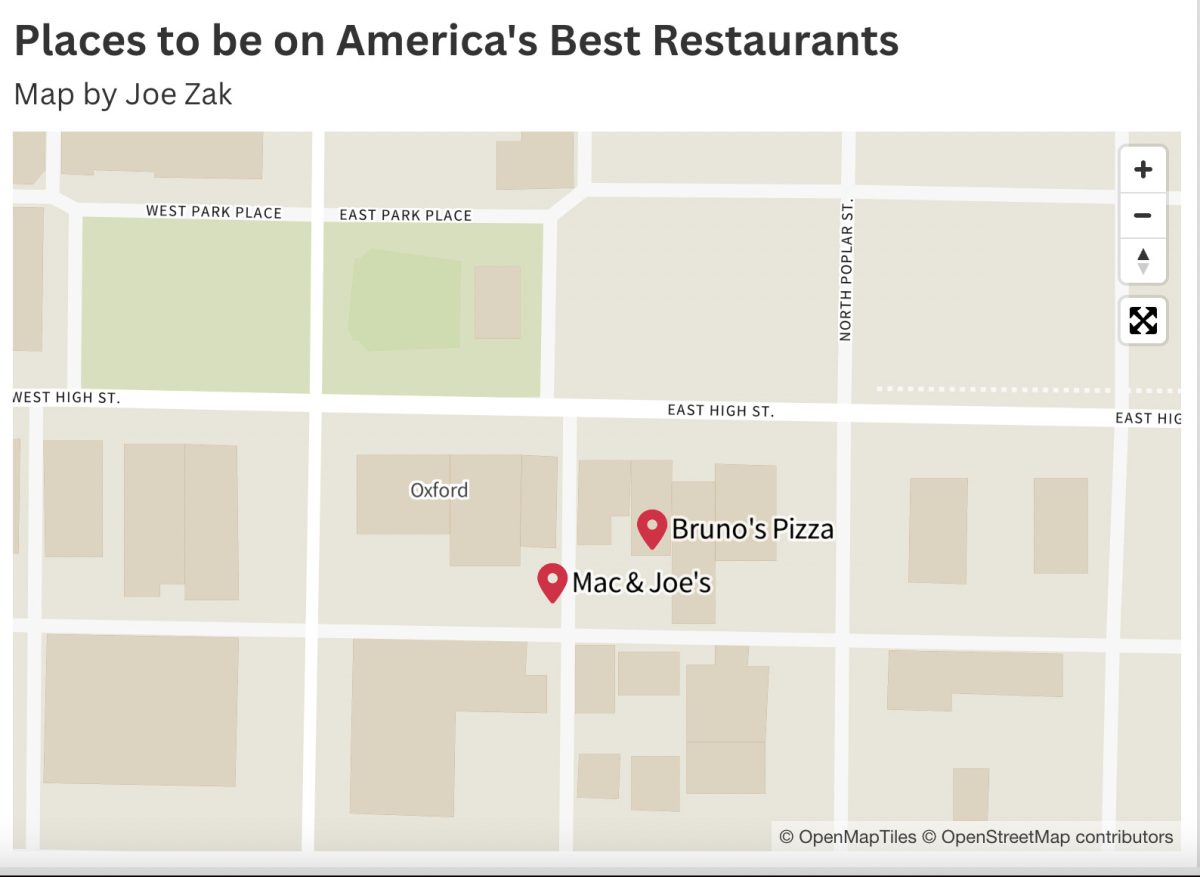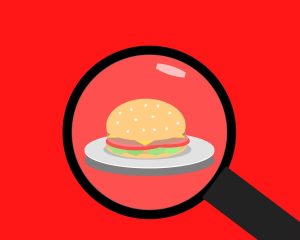Chemical combinations determine the value of bourbon
Photo provided by Michael Crowder
Crowder and his students studied the complexities of making bourbon during a four-day distiller’s workshop at “Moonshine University,” in Louisville, Kentucky.
September 24, 2021
According to Michael Crowder, chair of the Miami University’s Department of Chemistry and Biochemistry, a glass of bourbon has about 10,000 distinct chemicals.
And unlocking the right chemical combination can make the difference between a $10 bottle of bourbon and one that sells $2,500 a bottle.
Crowder and his team are closely studying bourbons using analytical chemistry. Crowder, who is now also Miami’s interim vice president of research and innovation, said the project idea arose several years ago, when faculty began offering a fermentation course for seniors.

“At the end of the first fall semester, students that did well were invited to go to a four-day distiller’s workshop at Moonshine University in Louisville, Kentucky,” Crowder said.
The workshop featured talks from experts from the distilling field and lessons on how to make moonshine.
“It was really interesting to me how different all these bourbons are,” Crowder said. “All bourbons use the same four ingredients, corn, malted barley, rye, and wheat. Most use similar yeast and equipment, and yet their product is so different … you can tell by the taste of them.”
Crowder said he wanted to use chemistry to tell the difference between bourbons. His goals were to find what chemicals were in them and their levels of toxicity, as well as to authenticate high-end bourbons and low-end bourbons.
“Marketing is a big part of bourbon sales, and some sell for $2,500 a fifth and some sell for $10,” he said. “Unscrupulous people could get a $2,500 bottle, empty it, fill it with a cheap bourbon, then sell it for the original price.”
In his research, Crowder has used three different techniques. “The simplest is called nuclear magnetic resonance, or NMR,” he said. “If you’ve ever hurt yourself and you needed an MRI, it’s the same tech,” said Crowder. “We take the bourbon and put it in a big magnetic field and shoot light on it, essentially. Different parts of the chemical react differently depending on the chemical identification.”
With NMR, the concentration of certain chemicals can easily be discovered. “There’s one chemical we discovered that gives the flavor and the smell of bananas,” Crowder said. “We can also detect that there are chemicals that taste like the vanilla in bourbons, and we can detect it in very high concentrations.”
Through peaks in the recorded spectrum, Crowder said that he could identify what chemicals are present within a sample in just a couple of minutes. He also uses liquid chromatography with mass spectrometry and gas chromatography with spectrometry in his analysis, two methods to detect and categorize compounds that are more intricate than detectable with NMR.
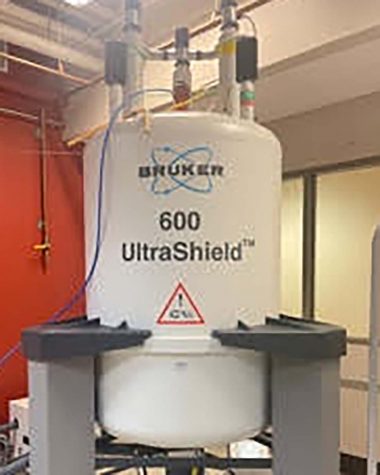
With these techniques, Crowder said, “When you smell a bourbon, we’re going to detect the chemicals that your nose is actually interacting with.”
For Crowder, one of the most interesting parts of his research has been finding that as bourbons age, the chemical compounds in the barrels are oxidized.
“The ethanol and water can make its way through the wood, and oxygen is able to come in,” he said. “All the different chemicals you taste and experience when you taste bourbon are actually due to chemical reactions.”
Some bourbons, Crowder said, are conditioned bourbons. “There’s a big market for them right now. Essentially, once a bourbon has been aged, it is put in a used barrel where other spirits have lived,” he explained.
Crowder said one Kentucky company, Angel’s Envy, ages its bourbon before letting it sit in port wine barrels from Portugal. The extra conditioning further changes the chemical makeup of the bourbon.
The more research that is done, Crowder said, the more light is shed on the complexities of bourbon and the aging process.
“Do we understand all the chemistry?” Crowder asked. “No, and I don’t think that we ever will.”
Crowder said his project will continue, but added that so far his team hasn’t received federal grant money. Instead, some federal sources have suggested that he turn toward distilleries for research funding.
“I have mixed feelings about that because it’s hard to keep an arm’s length away,” he said. “If a distillery funds our research and we find they have a much higher concentration of toxic chemicals in their bourbon than everyone else, we could have problems with publishing that.”
“We’re going to continue to try and get funding for this,” he said, adding that the U.S. Department of Agriculture, the National Institutes of Health (NIH), and the National Science Foundation (NSF) were all possible sources of support.
Above all, Crowder said that he enjoys the more individual side of bourbon.
“I always say that there is one bourbon that, when I taste it, I smell my grandmother’s attic,” he said. “And it is absolutely wrong for a bourbon steward to say, ‘You don’t smell your grandma’s attic.’ How would they know that? A lot of bourbons have to do with your experience and what you taste and sense.”
According to Crowder, drinking bourbon is a very personal experience. “That’s what I think is really cool about this whole process,” he said. “And what’s awesome is that the chemistry confirms that people are tasting different things. It has to do with what they sense.”


